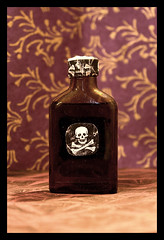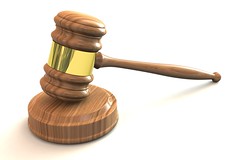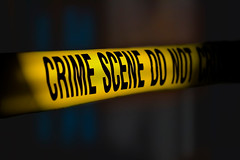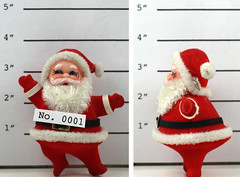| 12677366420 | Mathieu Orfila | Father of Forensic Toxicology
perfected the Marsh test to test for poison and their effects
famous from 1840 Marie Lafarge arsenic case | | 0 |
| 12677378797 | Alphonse Bertillion | Father of Criminal Identification
developed body measuring system to classify captured criminals that was used until the Will West Identical twin incident | | 1 |
| 12677394437 | Francis Galton | developed the method of classifying fingerprints
first used criminally in the Francis Rojas case in 1892 | | 2 |
| 12677404749 | 1892 | First criminal use of fingerprint identification in Franics Rojas case | | 3 |
| 12677411617 | Calvin Goddard | developed the method for comparing bullets and their casings with a comparison microscope
unique indentations left on the soft metal of a bullet can be traced back to a certain gun | | 4 |
| 12677429265 | Albert S. Osborn | a forensic document examiner
hand writing analysis
first used during the Lindbergh baby kidnapping case | | 5 |
| 12677437277 | Walter C. McCrone | premier microscopist
proved the Shroud of Turn never enveloped the body of Jesus | | 6 |
| 12677446965 | Hans Gross | judge that developed the process of crime scene investigation developed the first detective system | | 7 |
| 12677456660 | Edmond Locard | set up the first workable crime lab in France
formulated Locards Exchange Principle: every contact leaves a trace | | 8 |
| 12677465455 | Karl Landsteiner | discovered that blood can be routed into 4 categories
A
B
AB
O | | 9 |
| 12677473181 | Leone Lattes | developed a method of bloodtyping from dried blood as well as using the Preciptin test to determine whether blood is human or animal | | 10 |
| 12677492653 | Fingerprint Patterns | Plain Arch
Tented Arch
Radial Loop
Ulnar Loop
Plain Whorl
Central Pocket Whorl
Double Loop
Accidential Whorl | | 11 |
| 12677508213 | loop pattern | ridges flow inward and the recurve in the direction of the origin |  | 12 |
| 12677516505 | radial | only 5%
flow and recourse toward the radius/thumbside of the hand | | 13 |
| 12677523180 | ulnar | 60%
flow and recurve toward the pinkie side | | 14 |
| 12677527840 | arches | ridges enter and exit, no deltas | | 15 |
| 12677531850 | deltas | curve, triangular ride pattern | | 16 |
| 12677544060 | plain arch | wave, rise, and exit smoothly | | 17 |
| 12677544061 | whorl | at least 2 delta type divergences with recurving ridges- resembles a bulls eye | | 18 |
| 12677553194 | plain whorl | one or more ridges form a complete revolution | | 19 |
| 12677557641 | central pocket | form a loop pattern
delta connection line will not intersect the center | | 20 |
| 12677566459 | double loop | 2 separate loops are present | | 21 |
| 12677570253 | accidental | random shapes, no conformity, rare | | 22 |
| 12677581185 | dermal papillae | formed in the fetal stage and remain the same throughout a lifetime | | 23 |
| 12677584234 | latent fingerprints | not visible until dusted | | 24 |
| 12677630992 | plastic prints | ridge impressions left on a material | | 25 |
| 12677635462 | hard surface detection | powder- grey black, fluorescent, magnetic
super glue
lighting techniques | | 26 |
| 12677643404 | soft surface detection | iodine fuming- nonpermanent visualization
ninhydrin- reacts with protein | | 27 |
| 12677665432 | Primary Classification | developed by Edward Henry in 1897
first class-action step in the FBI system
fingerprint cards can be divided into 1,024 groups | | 28 |
| 12677745981 | unbroken cortical intrusions | | | 29 |
| 12677791254 | DNA | Deoxyribonucleic Acid | | 30 |
| 12677795017 | Nucleotide | small subunits of DNA | | 31 |
| 12677802339 | 3 parts of nucleotide | sugar, phosphate, base | | 32 |
| 12677805482 | Four Nitrogen Bases in DNA | thymine, guanin, adenine, cytosine | | 33 |
| 12677817514 | Purerings | nitrogen single ring structures of adenine and thymine | | 34 |
| 12677858712 | pyridines | nitrogen use of guanine and cytosine | | 35 |
| 12677876349 | Crick and Watson | two scientist that discovered the structure of the DNA molecule | | 36 |
| 12677881874 | double helix | DNA looks like a ladder twisted | | 37 |
| 12677886681 | Phosphate and sugar | tow molecules that make up the sides of the ladder of a DNA molecule | | 38 |
| 12677892622 | Bases | molecules that meet across the middle, forming the steps of the ladder | | 39 |
| 12677911746 | Chargaffs rules | the percentages of adenine are equal to hose of thymine and the percentages of cytosine are qual to those of guanine in DNA | | 40 |
| 12677918171 | hydrogen | holds together nitrogen bases in the center of the molecule | | 41 |
| 12677934510 | deoxyribo | type of sugar found in the DNA | | 42 |
| 12677950319 | DNA backbones | information sotred within the helix | | 43 |
| 12677956416 | DNA molecule | hundreds of millions of base models | | 44 |
| 12677965660 | Franklins Photo 51 | photo of double helix
most famous photo in biology | | 45 |
| 12678070941 | nuclear dna | from both parents | | 46 |
| 12678075325 | mitochondrial dna | from maternal | | 47 |
| 12678082027 | Short Tandem Repeats | evaluate specific regions (loci) within nuclear DNA
FBI uses 13 stand specific regions for CODIS | | 48 |
| 12678093717 | CODIS | Combined DNA Index System | | 49 |
| 12678103664 | DNA Technologies | Restriction Fragment Length Polymorphism
PCR Analysis
STR Analysis
Mitochondrial DNA Analysis
Y chromosome analysis | | 50 |
| 12678126900 | chromosomes | our body way of organizing all the info that our genetic materials contain
each pair contains one from mom, one from dad
contains 100s to 1000s of genes | | 51 |
| 12678139104 | genes | info blocks within chromosomes
blueprint for a specific protein in the body
dozens of proteins are responsible for synthesis of ATP, digesting food etc | | 52 |
| 12678157424 | 1991 | first paper on Short Tandem repeats | | 53 |
| 12678165921 | 1998 | FBI launches combined DNA Index System CODIS | | 54 |
| 12678172426 | 1988 | FBI starts DNA casework | | 55 |
| 12678177700 | nucleotide | |  | 56 |
| 12760050416 | Alexander Weiner | worked with rhesus monkeys to notice a type of red cell protein | | 57 |
| 12760057625 | Rh | 85 percent of the population has the protein | | 58 |
| 12760062976 | blood type | based on the presence or absence of the AB and Rh proteins | | 59 |
| 12760110554 | 1814 | scientific paper on poison by Methieu Orfila | | 60 |
| 12760113750 | 1823 | whorls, eclipses, and triangles identified by Jan Evangelista | | 61 |
| 12760118016 | 1836 | a method for identifying arsenic poisoning was discovered | | 62 |
| 12760124562 | 1879 | a system of body measurements for identification was created by Bertillion | | 63 |
| 12760131656 | 1880 | fingerprints used in Tokyo by Henry Fooled
Sherlock Holmes was written | | 64 |
| 12760138783 | 1889 | bullets matched to gun they were fired from | | 65 |
| 12760142777 | 1892 | first criminal use of fingerprint identification in the Francis Rojas case | | 66 |
| 12760147362 | 1901 | human blood groups identified | | 67 |
| 12760150305 | 1903 | NYCPD begin fingerprint files | | 68 |
| 12760156023 | 1910 | first forensic lab in France by Edmund Locard | | 69 |
| 12760160701 | 1923 | first forensic lab in the U.S in the LA | | 70 |
| 12760163932 | 1930 | Nation fingerprint file est. by the FBI | | 71 |
| 12760167364 | 1987 | first time DNA evidence was used in the U.S to convict | | 72 |
| 12760184140 | passive blood drops | often the largest | | 73 |
| 12760186481 | contact stains | smears and wipes of something that came into contact with the blood | | 74 |
| 12760190830 | splatter | the separation and breaking apart of blood | | 75 |
| 12760197765 | 2-3 blood drops | 1 billion red blood cells
for every 600 red there are 40 platelets and one white | | 76 |
| 12760203599 | dog | undeveloped red blood cells- look similar to human | | 77 |
| 12760207576 | locus | the physical position of an STR | | 78 |
| 12760226646 | hair can determine | human or animal
race
origin (body part)
how it was removed
treated hair
drugs ingested | | 79 |
| 12760233548 | trace evidence | any small pieces of material, manmade, or natural
hair and fiber are the most common | | 80 |
| 12760244078 | hair shaft | contains mitochondrial DNA- can be typed by comparing relatives | | 81 |
| 12760247879 | hair root/follicle | only part of hair that contains nuclear DNA- actively growing | | 82 |
| 12760251821 | amagen | phase wehre hair grows | | 83 |
| 12760254521 | catagen | transition between active and loss stage- slowed growth | | 84 |
| 12760258666 | telogen | final phase resulting in hair loss | | 85 |
| 12760262083 | hair cuticle | outermost layer of hair, covered in scales, the scales point toward the tip of the hair | | 86 |
| 12760266425 | scale patterns | mosaic
pectinate
imbricate
petal
diamond
chevron | | 87 |
| 12760271764 | hair cortex | give hair its shape and color pigmentation | | 88 |
| 12760275018 | hair medulla | hair core that isn't always present, comes in types and patterns
if large, it is most likely an animal hair
isn't always present in the core | | 89 |
| 12760278717 | medulla types | uniserial
multi serial
vacuolated
lattice
amorphous (w/o pattern) | | 90 |
| 12760307383 | basal layer | grows quicker than the layers around it , causing it to collapse and fall in on itself, creating ridings in-between the other layers | | 91 |
| 12760376163 | agglutination | clumping of molecules or cells caused by an antigen antibody reaction | | 92 |
| 12760380319 | antibodies | proteins secreted by white blood cells that attach to antigens | | 93 |
| 12760392483 | cell surface proteins | proteins embedded in the cell membrane | | 94 |
| 12760397508 | antigens | any foreign substance or cell in the body that reacts with antibodies | | 95 |
| 12760403134 | red blood cells | carry oxygen throughout the body | | 96 |
| 12760410522 | satellite | secondary drop formed when blood breaks free from the main contact drop of blood | | 97 |
| 12760416811 | white blood cells | cells that police the body by destroying foreign materials | | 98 |
| 12760458504 | ten card | form used to record and preserve a persons fingerprints | | 99 |
| 12760479026 | class evidence | material that connects an individual or thing to a certain group | | 100 |
| 12760494374 | individual evidence | a kind of evidence that identifies a particular person or thing | | 101 |
| 12760501194 | keratin | a type of fibrous protein that makes up the majority of the cortex of a hair | | 102 |
| 12760505428 | trace evidence | small but measurable amounts of physical or biological material found at a crime scene | | 103 |
| 12760522040 | fingerprinting clarity | 1- vague pattern
2- detail
3- ridges | | 104 |
| 12760528538 | AFIS | plot points to create a mathematical system over prints | | 105 |
| 12761029185 | Rh | represented by the + | | 106 |
| 12761038697 | donor/reciever | - can't get +
+ can get - | | 107 |
| 12761041915 | AB | universal reciever | | 108 |
| 12761045389 | O | universal donor | | 109 |
| 12761049757 | clumping | positive blood type match | | 110 |
| 12761049759 | A | anti B | | 111 |
| 12761052221 | B | anti A | | 112 |



































































































